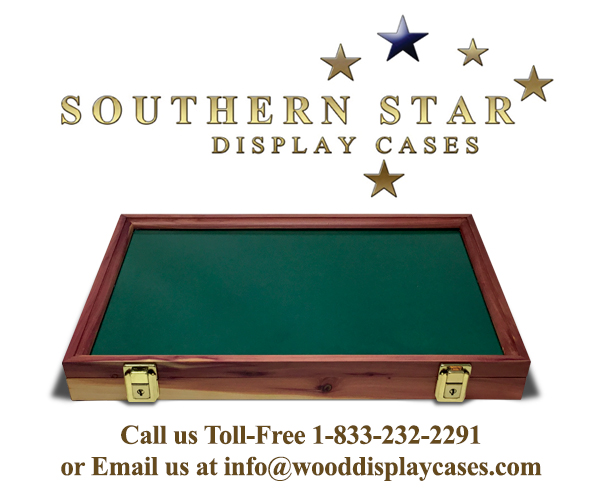The complete issue
Vol. 4, No. 1
(32 pages)
Print edition: Visit our store to check availability
Digital edition: Visit JSTOR.org to purchase
Subscribe to MI
Explore the MI Archives: Browse | Advanced search | Tutorial
Inside
Cover Image
The magazine cover shows an extremely rare 1898 image of three Spanish infantrymen in Cuba, with Mausers from 1893.
Editor’s Corner (inside front cover)
The editor explains the reason for featuring non-American military on the cover of the current issue. Due to its rarity and the fact that they were adversaries to American soldiers in the Spanish-American War, the editor felt it was a significant image and should grace the cover. The editor also announces a special drawing for another rare item: the premier issue of Military Images. Readers can submit the survey form on page 31 to enter a raffle to win a copy of the out-of-print issue, or an extension of their subscription by one year.
Mail Call (p. 2)
The readership provides clarification on the identification of a Tennessee Confederate officer, further information about the Lincoln family of Virginia, complaints (too many Yanks, not enough trans-Mississippi Yanks), and a reader who finds out that he most likely did see General Charles King when he was a child at a parade in Milwaukee in 1931. A request for information about the uniform worn by the 23rd Illinois (“Mulligan’s Chicago Irish Brigade”) was also made.
Passing in Review (p. 3, 5)
Three different publications are reviewed in this issue, beginning with Quartered in Hell: The Story of the American North Russian Expeditionary Force, 1918-1919 by Dennis Gordon. Told in the words of the men who were part of this campaign against the Bolsheviks after the end of World War One, the book provides insight into a little-known part of American military history. Next is The Guns of ’62, volume II of The Images of War: 1861-1865, edited by William C. Davis. With three errors noted in the review, the book was found to be a worthy text with some rare photographs included. Finally, a lengthy review of Attack and Die: Civil War Military Tactics and the Southern Heritage by Grady McWhiney and Perry D. Jamieson. The thesis of the work is that the South lost in the Civil War due to their tactics, which favored the offensive and was a reflection of the Scots-Irish heritage and culture that predominated in the South. While the reviewer disagreed with this assessment (and provided rationale for this disagreement), the book was still thought to be a very worthwhile and thought-provoking read.
Babes in Arms: A Photo Survey of Children in Patriotic Attire by Carol Villa (pp. 6-11)
Collected from reader submissions, the article is a pictorial featuring 23 different images of children wearing attire ranging from an antebellum sheriff with his four siblings to would-be Zouaves to a doctor and nurse wearing appropriate World War One outfits. One image may be of a member of a Baltimore Zouave unit made up of boys from age 9 to 14, while others are patriotic Yankee toddlers or little loyal Southern belles. Spanish-American War uniforms include a few soldiers and a sailor, while the siblings (boy and girl) wearing Indian garb and both holding different types of BB guns in a cabinet photo showed how they were interpreted at the start of the 20th century. The makes of the different air rifles and BB guns are also indicated, providing additional interest.
“Lee broke today…” by Alan J. Sessarego (pp. 12-13)
The author describes a recent find of his in an antique store, where he came across a pocket diary belonging to an employee of Alexander Gardner. John L. Cameron’s diary was purchased on December 30, 1865 and the entries ended in April 1866. Although not much is known about Cameron, it is known that he worked as a printer and grader of glass in the Gardner studio… and that a negative of General Robert E. Lee broke while he was grading it on March 28.
Three Rebs and Three Yanks by Thomas P. Sweeney and Robert J. Willey (pp. 14-15)
Thomas Sweeney provides information on two images that show all three of the Duval sons of Missouri, all three which would be killed in action while serving the Confederacy in the Missouri State Guard and then the 3rd Missouri Infantry. Both Henderson and Thomas would be killed at Champion’s Hill in 1863, while Lt. William Duval was killed at Corinth in 1862. Robert Willey provide the same for three Indiana friends who had to go north into Michigan to find a unit that would enlist all three. Andrew Kingsley was the first of the three to leave Company C of the 4th Michigan Infantry, being discharged for disability in a few months before Frank Spelman was killed at White Oak Swamp in 1862; the letter informing his father of this death was included with the article. Only Eugene Vaughn survived of the three, mustering out with the end of his enlistment in June 1964.
Pennsylvanians in Gray: Early Civil War Uniforms in the Keystone State by Michael J. Winey (pp. 16-23)
Sixteen different images detail the discussion regarding the different Pennsylvania units that began the Civil War wearing gray rather than blue. Sometimes it was due to the militia uniform that the men wore and sometimes it was due to the sheer volume of recruits and the more expensive blue dye needed to produce blue uniforms, but many Pennsylvanians went to war wearing a hue that was associated with the Confederates they were fighting. The article discusses the existence of swatch books, which show the colors used in uniform production until a standard Federal uniform could be provided. One very interesting pair of photographs shows a soldier and his family at Camp Slocum in Virginia, with soldiers in the background also wearing the same lighter colored uniform. The article provides a great deal of detail, outlining the various reasons for Pennsylvanians in gray, making the case for collectors to look closely and research their images.
Gettysburg Mystery Photo: A Second Look by Lawrence G. Bixley (pp. 24-25)
In a follow-up article to one printed in the March-April 1982 issue of Military Images, the author is able to provide additional detail regarding each of the two main questions that remained from the investigation of the Gutekunst image. Firstly, the tent in the original article is established as the embalming tent of Dr. Thomas Holmes, as it was identified as such in a Mathew Brady image. The question that arose from this second image, which is assumed to be a later image, is why the tent was moved a short distance from where it was in the Gutekunst image. Secondly, the author of the current article provides a definitive image of Marie “French Mary” Tepe, which shows her wearing the Kearny Cross which she was awarded for bravery shown during the Battle of Fredericksburg. With the veracity of that part of the previous article answered, the question of the details surrounding her two marriages are addressed. Her first husband did not die in her arms at Gettysburg, but was taken prisoner on the first day, eventually spending six months in a Confederate prison. The question of her second husband is still not resolved.
Stragglers (pp. 26-29)
The submissions by the readers include two World War One machine gunners of the 322nd Machine Gun Battalion, 86th Division aiming at the camera in 1917, Marines relaxing under the shadow of a tent fly among the headstones of fallen comrades in Cuba in 1898, and a very rare 1861 tintype image of the Main Plaza in San Antonio, Texas in 1861 as Federal military gather to leave after their surrender by General David Twigg in February of that year.
Back Image
The back image is of a very small “Confederate” standing at attention in a sixth-plate tintype.





































